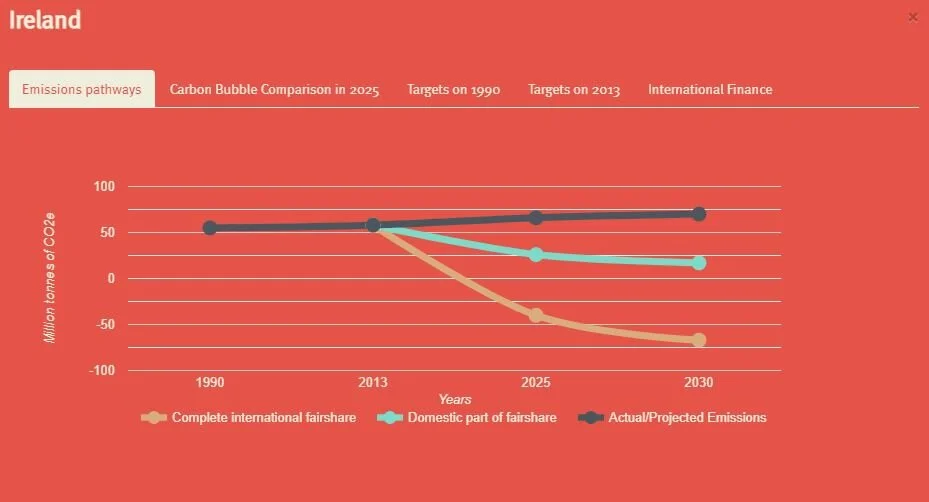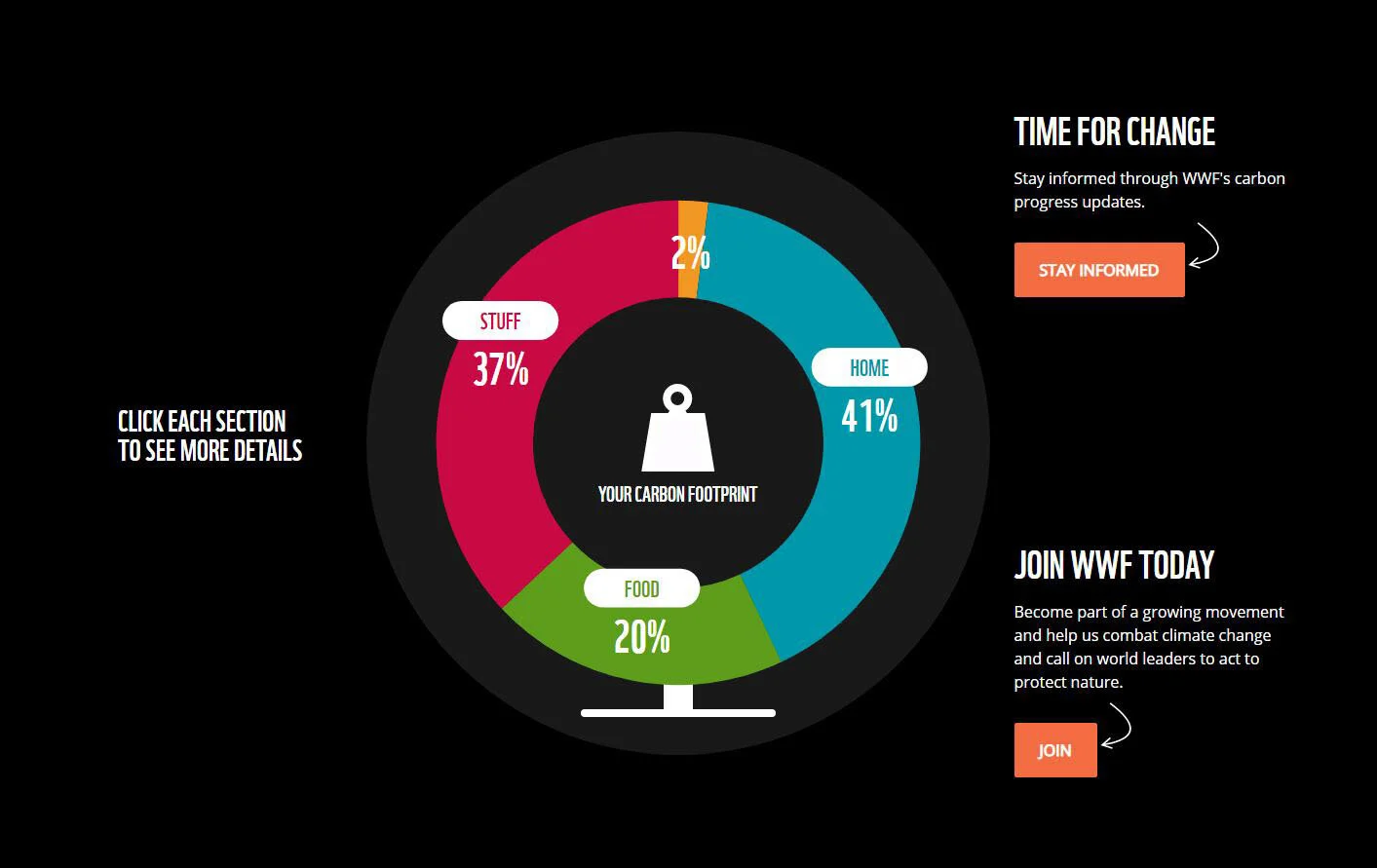
How To Calculate Your Carbon Footprint
The Climate Crisis is the biggest threat facing humanity today – both in Ireland and around the world – but knowing how to minimise your personal impact can be difficult.
In fact, not knowing where to start on living more sustainably can be a source of great anxiety for people and can lead to inaction, as it can be intimidating – but apathy is far worse than not doing something, and we’re here to help.
In today’s article we present how to measure your carbon footprint, and how to find out which areas of your lifestyle have the biggest climate impact, and suggest little changes you can make which can add up to a big difference.
What Is Your Carbon Footprint
Your carbon footprint measures the amount of carbon dioxide released into the atmosphere as a result of your daily activities – from what you drive, to what you eat, and even the clothes you wear.
Understanding the size of your carbon footprint is an essential first step to more sustainable living, as it will help you find greener options.
According to the Central Statistics Office, the average person in Ireland has a carbon footprint of 13.3 tonnes of CO2 per year.
This is the third highest carbon footprint in the EU, with the average Irish person accounting for 55% more emissions than the average person in the European Union (8.6 tonnes).
Yet, when compared to the rest of the world, our unsustainable levels of consumption become even more apparent. The average carbon footprint per person worldwide is just 4.7 tonnes of CO2 per person – so in Ireland we produce nearly three times more emissions than the average person on Earth.
This is not to apportion blame, but to show how dire the situation has become and how urgently action is needed.
This graph shows how much Ireland needs to lower its emissions to meet climate targets and keep global temperatures below 1.5C increase (international fair share). Credit: Climate Fair Share
If we are to reach our climate targets and keep rising global temperatures below 1.5°C, we will all need to achieve a carbon footprint of no more than 2.5 tonnes, which is known as the Climate Fair Share. This will require the average Irish person to reduce their emissions by 81%.
Finding Your Carbon Footprint
There are plenty of carbon footprint calculators available today to help you find out your emissions, although some are more user-friendly than others.
While those that ask more broad questions such as “what fuel do you use to heat your home” are easier to answer, it is worth understanding that they will give a less accurate result – so it may be worth grabbing some quick information such as the amount of energy you use at home (this is available from your energy provider), and the mileage you drove in the last year.
The WWF has an excellent carbon footprint calculator that does not require any supporting data and only takes around five minutes to complete. At the end it will give you your total estimated carbon footprint, and a quick breakdown of where you create the highest emissions, and clicking on a category such as “Travel” or “Food” will give you some recommendations on how to live more sustainably in these areas.
Credit: WWF Carbon Calculator
While less visually stimulating, Friends of the Earth Ireland also offers a simple and easy-to-use calculator that will only take a matter of minutes to complete. While they do not offer suggestions on what you can do to cut your carbon footprint, they do show your total carbon footprint very clearly, as well as providing a breakdown of where your emissions come from.
A third, and final, user-friendly calculator is Bulb’s. While they’re a UK energy provider rather than one operating in Ireland, it takes less than three minutes to complete and, in addition to the usual breakdown of where your emissions come from, it also tells you how many trees you’d need to plant to offset your emissions.
This is a great way to understand the scale of your emissions – and put the ecological and economic cost in perspective, as most people wouldn’t be able to afford the 1,000s of trees needed to offset their carbon footprint.
Finally, we’d also recommend looking at Carbon Footprint’s calculator. This one requires you to have information on things like the amount of electricity you used, the number of litres of oil or amount of wood used to heat your home.
While this can make the process take a little longer, the overall result is a lot more accurate.
Understanding Your Carbon Footprint
If your lifestyle is typical of that of the average person in Ireland, you’ll likely see that your biggest contributors are food, energy and travel – especially car use and the number of flights you take.
This is why we advocate for electric car adoption, as it is a small change that can make a big difference without compromising your quality of life.
However, if your results have shocked you and you want to take action and be more sustainable, here are some great places to start – and which will save you money in the process:
Eat less meat – The production of meat not only creates a lot of CO2 and methane emissions, but also requires a vast amount of land, which reduces Earth’s capacity to offset emissions. Eating meat less often will have an immediate impact on your carbon footprint. Consider only eating meat a few times per month rather than a few times a week
Become vegan – It’s not just the meat itself but all dairy products which have a high carbon footprint. Becoming vegan can reduce the carbon footprint of your food by almost 60%, and there are tonnes of amazing and delicious meat substitute options if you miss burgers and sausages
Combined, agriculture and transport account for 54% of Ireland’s greenhouse gas emissions. Credit: CIE
Switch to an electric car – Electric cars are considerably greener than their petrol/diesel/hybrid counterparts. Within two years they’ll have offset the emissions from their production, and they offer the prospect to be run entirely on renewable energy. Costing as little as €4 to top up from empty, they can save you a lot of money too
Use public transport – Even better than using an electric car is using public transport for your daily commute or travel needs. This is the greenest form of transport outside walking and cycling – so you might want to consider them too
Fly less (or stop flying) – Flying is just about the single worst thing you can do, and contributes a huge amount of emissions which worsen the climate crisis. If you can take a ferry, or conduct business via Skype or Zoom rather than flying for a meeting, then you’ll instantly make a huge dent in your carbon footprint
Insulate your home – This one is so often overlooked, but it can make a real difference by reducing the amount of energy you use to keep warm. Insulation is cheap and there are grants available to help you
Switch to a renewable energy tariff – In Ireland, it is a sad fact that a vast amount of our power comes from fossil fuels – even peat, which destroys our precious bogs, releasing the CO2 they capture into the atmosphere. Ask your provider if they offer a 100% renewable energy tariff – if not, look around, there’s tonnes out there and you could even save money by switching
Consider solar – Installing solar panels has never been cheaper, and could save you €100s per year on your energy bills. Running your house and car from solar energy is a big step towards sustainability and can even add value to your house. SEAI offers grants to help you install solar – more information can be found in our Guide To Renewable Energy
Buy less – This is a simple one: consume less. Fewer clothes, fewer smartphones, less stuff. This not only reduces the energy and resources needed to make those things, but it also reduces the emissions from delivering them to you, and the amount of waste that ends up being burnt or in landfill
Avoid plastics – Plastic is just oil in a different form, and requires a huge amount of energy to produce, with most of it ending up in landfill. Using plastic creates more demand for plastic, so try to avoid it wherever possible
For more tips and insights into how to reduce your carbon footprint, check out this excellent Wired article. It’s packed full of helpful suggestions, useful information and simple steps to living more sustainably.
Make it stand out.
How To Manage Climate Anxiety
Climate anxiety is a growing mental health problem worldwide in the face of climate change. We present helpful coping methods to help you take action
Climate Crisis – Not Climate Change
Find our why we're in the midst of a Climate Crisis, rather than living alongside Climate Change - and why this matters for encouraging climate action






